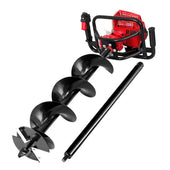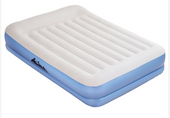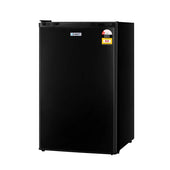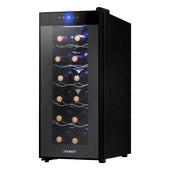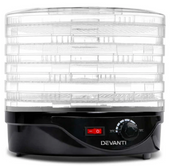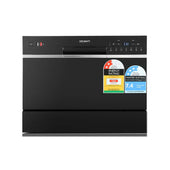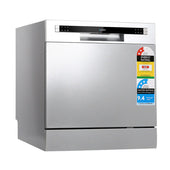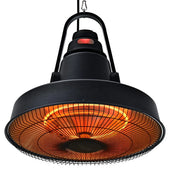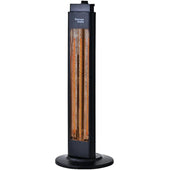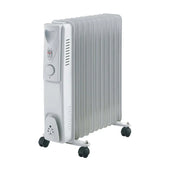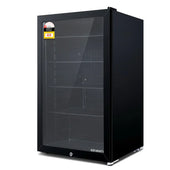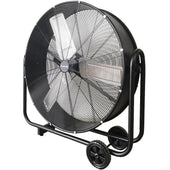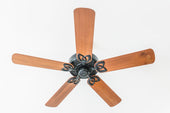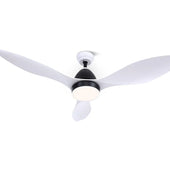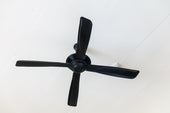Introduction: Understanding Vanity Units
Vanity units serve as both functional and aesthetic components in modern bathrooms, offering essential storage while contributing to the room’s overall design. They typically integrate a sink, cabinetry, and countertops, ensuring practicality and style coexist. The choice of vanity unit can have a significant impact on the functionality and visual appeal of the space. Dimensions, placement, and design play crucial roles, reflecting both the user’s needs and the bathroom’s layout.
When deciding between wall-hung and floor-standing vanity units, understanding their features and benefits becomes essential. Each type addresses different requirements, making their suitability depend on factors like available space, personal preferences, and the desired design outcome.
What Are Wall-Hung Vanity Units?
Wall-hung vanity units are bathroom fixtures designed to be mounted directly onto the wall without touching the floor. Their installation offers a sleek, contemporary aesthetic, ideal for modern interiors. By being elevated, these units create a sense of space, making them particularly suited for smaller bathrooms where visual openness is desired.
Features often include:
- Space beneath the unit for storage or easy cleaning.
- A streamlined design that complements minimalist styles.
- A variety of materials and finishes ranging from wood to gloss.
Wall-hung units require sturdy wall support and precise installation methods to ensure safety. Their versatility allows customisation of height, accommodating different preferences.
Features and Benefits of Wall-Hung Vanity Units
Wall-hung vanity units offer sleek, modern aesthetics while maximising floor space. These units are mounted directly to the wall, leaving the area underneath open, ideal for creating the illusion of a larger room. Their floating design facilitates easier cleaning as there are no awkward corners where dust or grime can accumulate. During Days, exploring bathroom design trends highlights how such innovations contribute to efficient and stylish interiors.
Benefits:
- Space-saving: Perfect for compact bathrooms, enhancing spaciousness.
- Ease of maintenance: Reduced cleaning effort for floors and corners.
- Stylish design: Adds a contemporary touch to the bathroom.
- Customisable installation height: Accommodates user preferences for comfort.
Wall-mounted styles also pair well with minimalist decor to achieve a seamless look.
What Are Floor-Standing Vanity Units?
Floor-standing vanity units are bathroom storage solutions that rest directly on the floor, offering a sturdy and traditional design. They typically combine a washbasin with built-in cabinets or drawers, providing ample storage for toiletries, towels, and other essentials. These units are ideal for larger bathrooms or spaces where additional storage is a priority.
Features of Floor-Standing Vanity Units:
- Robust Design: Their grounded structure ensures stability.
- Variety of Styles: Available in classic, modern, and minimalistic designs.
- Space Efficiency: Perfect for maximising storage, suitable for families.
- Easy Installation: Requires minimal fixtures compared to wall-hung units.
These robust units suit those seeking both functionality and timeless aesthetics.
Features and Benefits of Floor-Standing Vanity Units
Floor-standing vanity units provide a robust and spacious storage solution, ideal for larger households or rooms with ample floor space. Their sturdy construction ensures they can hold heavier items, such as ceramic basins or solid countertops. These units usually offer multiple drawers or cabinets, maximising storage for toiletries and cleaning supplies.
Unlike wall-mounted designs, floor-standing options require no reinforced walls, making them versatile for various building types. They come in diverse styles to complement both traditional and modern interiors.
Their full-contact design hides plumbing effectively, contributing to a clean, streamlined appearance. Installation is straightforward, reducing the need for extensive wall modifications.
Space Considerations: Small Bathrooms vs Larger Spaces
Choosing between wall-hung and floor-standing vanity units often depends on the space available. Wall-hung units are ideal for small bathrooms as they create a more open feel, offering storage without crowding the floor. They allow easier cleaning and can optimise areas where floor space is limited. In larger bathrooms, floor-standing units can serve as statement pieces, adding visual weight and balancing the room's proportions. These units often provide greater storage capacity, making them practical for families or shared spaces. Design preferences, bathroom size, and individual needs determine which option best complements the layout and maximises functionality.
Design Aesthetics: Modern vs Traditional Styles
Wall-hung and floor-standing vanity units cater to distinct aesthetic preferences. Wall-hung vanities are a hallmark of modern design, featuring clean lines, minimalist forms, and a floating appearance that enhances spatial fluidity. Their sleek build often incorporates glossy finishes and contemporary materials like glass or lacquer.
Traditional-style vanity units often favour floor-standing designs, characterised by ornate detailing, warm wood tones, and classic craftsmanship. These pieces evoke timeless elegance, integrating carvings, mouldings, and softer finishes that complement heritage interiors.
Choosing between these styles depends on the desired ambience: opt for wall-hung units for a futuristic vibe or floor-standing ones to maintain vintage charm. Style and function go hand in hand, ensuring aesthetic harmony.
Installation and Maintenance Differences
Wall-hung vanity units often require professional installation due to the need for secure mounting on walls. They demand sturdy wall support and meticulous alignment to ensure stability. Plumbing can also be complex, requiring concealed pipework and precise fitting to complement the floating design. Maintenance is relatively straightforward, as the raised structure allows easy access for cleaning beneath the unit.
Floor-standing vanity units, on the other hand, are typically easier to install and ideal for DIY enthusiasts. They rest directly on the floor, eliminating the need for robust wall support. Maintenance may be slightly more demanding, particularly in tighter spaces, as flooring around the base can accumulate dust and grime quickly.
Storage Solutions: Comparing Functionalities of Both Designs
Wall-hung vanity units and floor-standing designs differ significantly in storage capabilities.
- Wall-Hung Vanity Units:
- Typically offer a contemporary aesthetic with under-unit clearance.
- Storage space may be more limited, often consisting of drawers or smaller compartments.
- Suits compact bathrooms by creating an illusion of space but compromises on extensive storage.
- Floor-Standing Vanity Units:
- Provide larger storage capacity with deeper cabinets and more shelves.
- Ideal for storing bulky items such as cleaning supplies or towels.
- Utilitarian in design, it caters to families or those needing practical, accessible storage.
Choosing the right style depends on balancing storage demands with aesthetic preferences.
Cost Analysis: Which Type Fits Your Budget?
When comparing wall-hung and floor-standing vanity units, the cost varies depending on factors such as materials, installation, and maintenance.
- Wall-Hung Vanity Units Wall-hung units tend to be more expensive upfront due to their contemporary designs and specialised installation. Fitting them may require wall reinforcement, increasing labour costs. However, their floating design can simplify cleaning, potentially reducing upkeep expenses.
- Floor-Standing Vanity Units Floor-standing options are often more affordable, both in terms of purchase price and installation. They do not demand structural modifications, making them a cost-efficient choice. Nevertheless, their larger footprint may make cleaning around them more challenging.
Consider long-term maintenance alongside initial investment to determine suitability for the budget.
Eco-Friendly Options in Vanity Units
Eco-conscious homeowners can choose vanity units crafted from sustainable and ethically sourced materials. Bamboo, a rapidly renewable resource, is a popular choice due to its durability and modern aesthetic. Recycled timber also offers a rustic charm while reducing waste.
Opting for water-based, low-VOC finishes ensures minimal environmental impact during production. Many manufacturers now incorporate reclaimed materials and reduce chemicals in their processes to prioritise sustainability.
Energy-efficient lighting integrated into vanity units reduces electricity consumption. Additionally, units with storage designed for recyclables promote sustainable bathroom organisation.
Choosing brands certified by eco-labels or compliance programmes adds assurance of environmental responsibility. Transitioning to these options supports long-term planetary health.
User Preferences: Tailoring to Individual Needs
When selecting between wall-hung and floor-standing vanity units, individual preferences play a decisive role. Each user’s lifestyle, aesthetic sense, and practical requirements should be considered. Wall-hung units cater to those who value modern minimalism and prefer easy cleaning underneath. On the other hand, floor-standing units appeal to users needing generous storage while favouring a classic, robust look.
Factors influencing choice:
- Aesthetic preferences: Sleek, floating designs versus traditional, grounded styles.
- Storage capacity: Wall-mounted units often offer less space than larger, floor-standing options.
- Practical needs: Cleaning ease versus stability and durability.
Tailoring to personal habits ensures a vanity unit complements both form and function effectively.
Combining Functionality with Style: Customisation Possibilities
Wall-hung and floor-standing vanity units both offer a range of customisation options, allowing homeowners to tailor their bathroom design to fit their preferences. An array of finishes, such as gloss, matte, or wood-effect surfaces, ensures compatibility with various interior styles. Wall-hung furniture units are often more design-forward, with sleek, minimalist options ideal for contemporary spaces. Meanwhile, floor-standing furniture units can feature intricate detailing and traditional aesthetics, appealing to vintage or classic tastes.
Additional features like soft-close drawers, integrated LED lighting, and bespoke dimensions add practical values. Colour palettes can range widely, with neutral tones for sophistication or bold shades for a striking statement.
Conclusion: Making the Right Choice for Your Space
Choosing between wall-hung and floor-standing vanity units depends on practical considerations and aesthetic preferences. Wall-hung units excel in modern spaces, creating a minimalist appearance and offering flexibility in height adjustments—ideal for compact bathrooms. Conversely, floor-standing units provide robust storage options, often suiting traditional or spacious interiors with their grounded design.
Key factors include the available space, plumbing configuration, and maintenance requirements. Wall-hung units simplify cleaning beneath, while floor-standing options deliver greater weight capacity. By assessing functionality, spatial dynamics, and style alignment, homeowners can select the perfect vanity to complement their bathroom design and operational needs.





